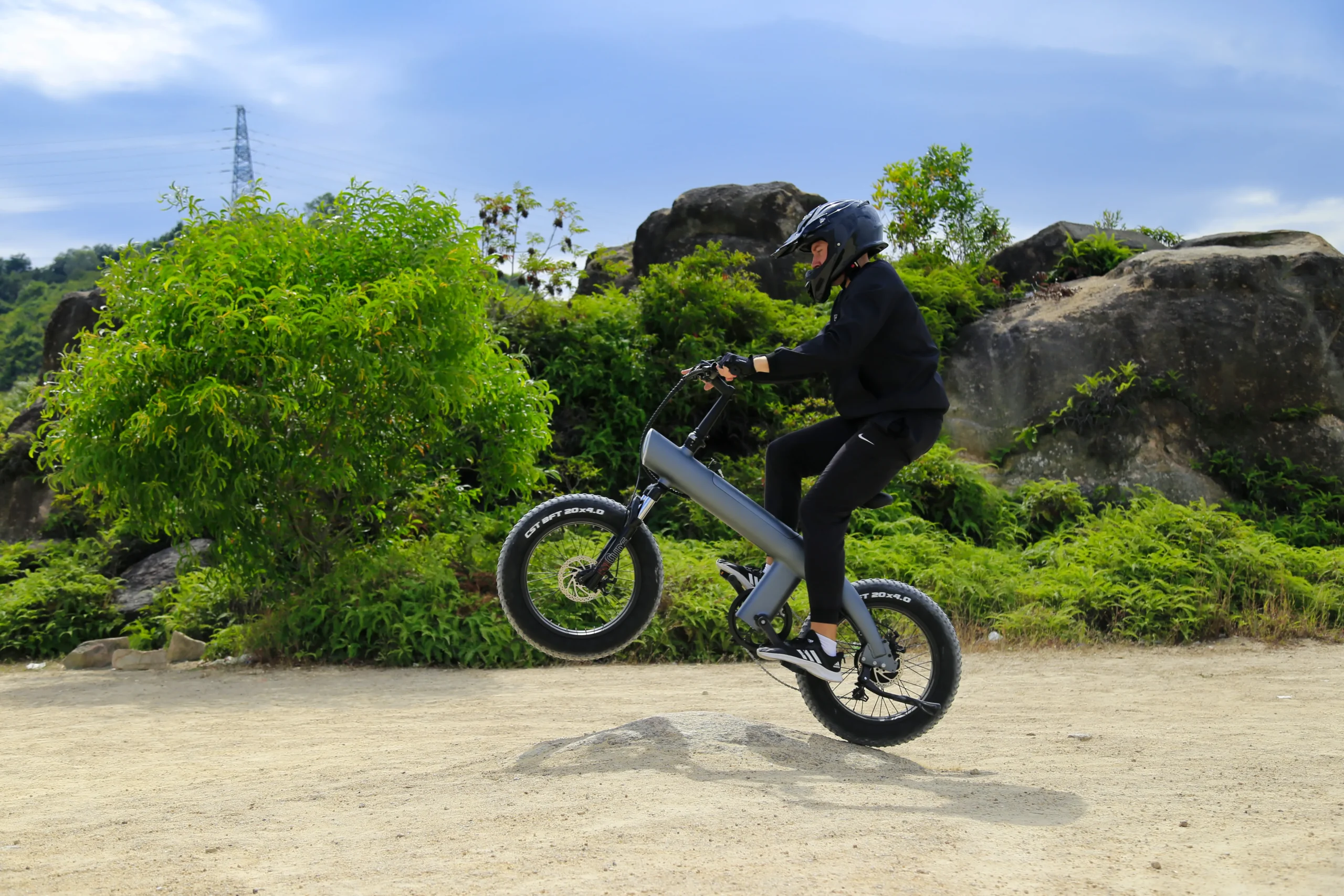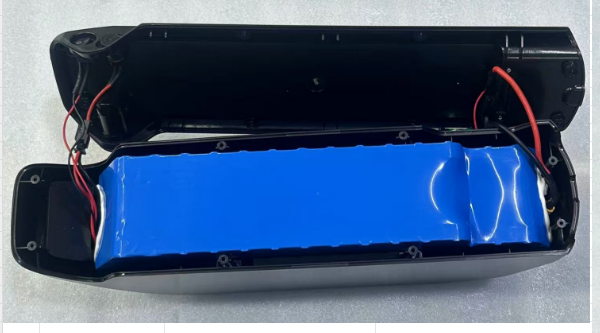Electric bikes (e-bikes) are becoming increasingly popular for their convenience, environmental benefits, and efficiency. At the heart of every e-bike is its battery. Understanding how to choose, use, and maintain your e-bike battery is crucial for getting the most out of your ride. In this article, we’ll explore everything you need to know about e-bike batteries.
1. What Battery is Best for E-Bikes?
When choosing a battery for your e-bike, lithium-ion (Li-ion) batteries are considered the best option. They offer the highest energy density, meaning they store more energy per unit of weight, which translates to longer ranges and lighter batteries. Within the Li-ion category, different chemistries like Lithium Iron Phosphate (LiFePO4) and Nickel Manganese Cobalt (NMC) offer various trade-offs between safety, cost, and performance. While NMC are much more widely used in e-bikes, and LIFEPO4 are usually used in electric golfcart, some e-motorcycle and solar storage.
2. How Long Do E-Bike Batteries Last?
The lifespan of an e-bike battery is typically measured in charge cycles. Most quality e-bike batteries (NCM) last between 500 to 1000 full-charge cycles. Depending on usage, this can translate to 3-5 years of regular use. Factors affecting battery life include how often it’s charged and discharged, the operating temperatures, and the level of care and maintenance.
3. Is a 500W Battery Enough for an E-Bike?
A 500W battery is usually sufficient for most e-bike riders, providing a good balance of power and range. It is well-suited for commuting, recreational riding, and moderate hills. However, for heavier riders, steep hills, or those seeking higher speeds, a higher wattage battery might be more appropriate.
4. Can I Put a Stronger Battery in My E-Bike?
Yes, you can put a stronger battery in your e-bike, but it’s essential to ensure compatibility with your bike’s motor and controller. Upgrading to a higher capacity battery can provide longer range and better performance, but it’s crucial to consult with your e-bike manufacturer or a professional to avoid potential issues like overheating or electrical failures.
5. Is it OK to Charge E-Bike Battery Every Day?
It is generally safe to charge your e-bike battery every day, especially if you use your bike frequently. Modern e-bike batteries are designed to handle regular charging. To maximize battery life, it’s advisable to charge it from 20%-30% to 80-90% for daily use and only fully charge it when you need the maximum range.
Why we suggest charge it from 20%-30% to 80-90% ?
Why discharging to 20%-30%? 1. discharge deeply (below 20%) can lead to higher internal temperatures, which can further accelerate the degradation process.. 2. stress the battery cells and accelerate capacity degradation. 3. can cause the battery cells to deteriorate faster and can also increase the internal resistance of the battery.
Why charge to 80%-90%? 1. HIGH VOLTAGE STRESS: When Li-ion batteries are charged to above 90% or till 100% state of charge, the internal voltage is high. This high voltage increases the chemical stress of the battery and promotes the aging of the internal materials. 2. Heat Accumulation: When charge to above 90% or till 100%, the battery will generate more heat. Excessive heat has a negative impact on battery life. 3. Electrochemical Balance: At 80-90% state of charge, the electrochemical balance of the battery is more stable and materials deteriorate at a slower rate.
6.How Do I Keep My E-Bike Battery Healthy?
Suggested Practical Operations
The following are practical recommendations for charging lithium e-bike batteries for everyday use:
DAILY USE: Charge from 20%-30% to 80-90% to extend battery life. If you plan to ride long distances, it is OK to charge to 100% occasionally, but try to avoid charging to 100% every time.
LONG TERM STORAGE: If the e-bike is not going to be used for a long period of time, it is recommended to charge the battery to 50-60% and store it in a cool, dry place. This will help slow down the aging of the battery.
Avoid float charging: Disconnect the charger in time after a full charge, and don’t leave the charger connected for a long time in a fully charged state.
With these practices, you can effectively extend the life of your lithium battery and keep it in a healthy state.
7. Can You Leave E-Bike Battery Overnight?
Yes, you can leave your e-bike battery charging overnight. Most modern e-bike batteries and chargers have built-in protections to prevent overcharging. However, for optimal battery health, it’s a good practice to unplug the charger once the battery is fully charged if it’s convenient.
8. Is There a Big Difference Between 500W and 750W E-Bike?
The difference between a 500W and a 750W e-bike is noticeable in terms of power and performance. A 750W motor will provide more torque and better acceleration, making it better suited for steep hills and off-road riding. However, it may also drain the battery faster and could be subject to different regulations depending on your location.
9. Which is Better, 350W or 500W?
A 500W e-bike is generally better than a 350W e-bike in terms of power and versatility. The extra power of a 500W motor allows for better performance on hills and under heavy loads. However, a 350W motor might be sufficient for flat terrain and lighter riders, and it often has a longer range due to lower power consumption.
10. How Fast is 750W in mph?
The speed of a 750W e-bike can vary based on factors like rider weight, terrain, and wind conditions. Typically, a 750W e-bike can reach speeds of 25-28 mph (40-45 km/h) on flat terrain. Always check local regulations, as some areas have speed limits for e-bikes.
11. Do E-Bike Batteries Drain When Not in Use?
Yes, e-bike batteries can drain slowly when not in use due to self-discharge. The rate of self-discharge varies but is generally quite low. It’s a good practice to check and recharge the battery every few months if you’re not using the e-bike regularly.
12. Can I Overcharge My E-Bike Battery?
Most modern e-bike batteries and chargers are designed with overcharge protection, making it unlikely to overcharge. However, consistently leaving the battery on the charger for extended periods after it is fully charged can still lead to reduced battery lifespan. It’s best to unplug the charger once charging is complete if feasible.
13. how to calculate the range of an e-bike battery?
To calculate the range of an e-bike battery, you can use the following formula:

Here’s how you can break it down:
14. Determine Battery Capacity in Watt-Hours (Wh)
The battery capacity in watt-hours is calculated by multiplying the voltage (V) by the amp-hour (Ah) rating of the battery:

2. Estimate Power Consumption
Power consumption can vary widely based on factors like rider weight, terrain, riding style, and speed. A typical power consumption rate for an e-bike might be between 10-20 Wh per kilometer (Wh/km). For this example, let’s assume an average consumption of 15 Wh/km.
3. Calculate the Range
Using the formula:

Important Factors Affecting Range:
- Riding Conditions: Uphill riding, headwinds, and rough terrain will increase power consumption.
- Rider Weight: Heavier riders will decrease the range.
- Speed: Higher speeds generally consume more power.
- Pedal Assist Level: Higher assist levels use more battery power.
- Battery Efficiency: Over time, battery efficiency can decrease, affecting the range.
By understanding these aspects of e-bike batteries, you can make informed decisions to enhance your riding experience and extend the life of your battery. Happy riding!





中.jpeg)
